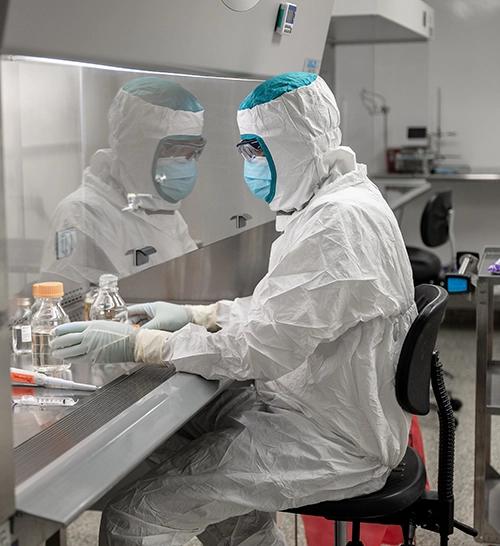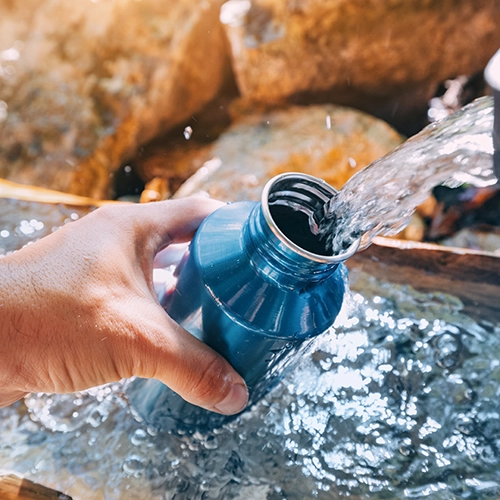Your Trusted Partner For 1,4-Dioxane Testing, Analysis, And Compliance
As the largest American-owned lab, Pace® understands the challenges posed by 1,4-Dioxane contamination, and we are dedicated to providing accurate and reliable testing services. Our state-of-the-art facilities and experienced team offer a wide range of analytical capabilities, including concentration data by GC/MS SIM, low-level analysis using EPA Method 522, and Compound Specific Isotope Analysis (CSIA). Choose Pace® for all your 1,4-Dioxane testing needs and experience our commitment to quality, precision, and service.

What Is 1,4-Dioxane?
1,4-Dioxane is a synthetic chemical commonly used as a solvent and stabilizer in various manufacturing processes. In addition, it is often found in products such as paint strippers, varnishes, and degreasers, as well as personal care items like shampoos, lotions, and cosmetics. Due to its widespread use and high solubility in water, 1,4-Dioxane has become a contaminant of concern in groundwater, surface water, and drinking water sources.
The Impact Of 1,4-Dioxane On Human Health And The Environment
Long-term exposure to 1,4-Dioxane has been linked to several adverse health effects. The U.S. Environmental Protection Agency (EPA) has classified 1,4-Dioxane as a “likely carcinogen” based on evidence from animal studies. Chronic exposure to 1,4-Dioxane may also cause liver and kidney damage, as well as respiratory and eye irritation.
In addition to its impact on human health, 1,4-Dioxane poses a threat to the environment. Its high solubility and resistance to biodegradation make it difficult to remove from water sources, which can lead to contamination of aquatic ecosystems and pose risks to wildlife.

How Is 1,4-Dioxane Regulated?
Several federal and state programs address 1,4-Dioxane in water, including drinking water, groundwater, surface water, and wastewater. Here are some of the primary programs currently addressing 1,4-Dioxane contamination in water.

Additionally, some states have taken action to protect their citizens from the dangers of 1,4-Dioxane. New York and Virginia were the first states to enact Maximum Contaminant Levels (MCLs) for 1,4-Dioxane in drinking water. Other states, such as Colorado, California, and Maine, also have standards and guidelines for 1,4-Dioxane in groundwater or drinking water.
Established in 1972 by the Clean Water Act, the National Pollutant Discharge Elimination System (NPDES) is a permit program that addresses water pollution by regulating point sources that discharge pollutants into waters of the United States. Past permits issued by state authorities as well as the EPA have contained monitoring requirements as well as effluent limits for 1,4-Dioxane in wastewater.
Designated a hazardous substance under CERCLA (Superfund), 1,4-Dioxane is subject to regulations and cleanup requirements. The EPA has established regional screening levels (RSLs) for soil and groundwater, using risk assessment guidance from the EPA Superfund program. These RSLs serve as initial cleanup goals and help determine when further action or study is needed.
RCRA is a federal law that regulates the management of hazardous waste. Under RCRA, facilities that generate or handle hazardous waste, including 1,4-Dioxane, are required to properly manage and dispose of it to prevent harm to human health and the environment. The law also sets standards for the treatment, storage, and disposal of hazardous waste, including requirements for labeling, record-keeping, and reporting.
1,4-Dioxane is also subject to EPCRA reporting requirements. Under EPCRA, entities are required to report on the storage, use, and release of hazardous substances to federal, state, and local governments. This information helps communities, emergency planners, and first responders be better prepared for chemical emergencies by providing them with critical data about the presence of hazardous chemicals and any potential risks they may pose. Additionally, EPCRA fosters a greater awareness of potential chemical hazards for the general public, promoting transparency and empowering citizens to take an active role in protecting their communities. EPCRA data can be accessed through the EPA’s Toxic Release Inventory (TRI) database.
Additional Resources
Need to find a lab that can handle your unique requirements?
Contact us directly or download our list of environmental certifications across our network.